
| WWT Shows | CLICK TO: Join and Support Internet Horology Club 185™ | IHC185™ Forums |

|
• Check Out Our... • • TWO Book Offer! • |
Welcome Aboard IHC185™  Internet Horology Club 185
Internet Horology Club 185  IHC185™ Discussion Site Main Page
IHC185™ Discussion Site Main Page  Horological Discussions, Questions and Answers
Horological Discussions, Questions and Answers  Pocket Watch Discussions
Pocket Watch Discussions  An elgin with an INTACT stopworks all put together!!
An elgin with an INTACT stopworks all put together!!
 Internet Horology Club 185
Internet Horology Club 185  IHC185™ Discussion Site Main Page
IHC185™ Discussion Site Main Page  Horological Discussions, Questions and Answers
Horological Discussions, Questions and Answers  Pocket Watch Discussions
Pocket Watch Discussions  An elgin with an INTACT stopworks all put together!!
An elgin with an INTACT stopworks all put together!!Page 1 2
Go  | New Topic  | Find-Or-Search  | Notify  | Tools  | Reply to Post  |  |
Tom, I see on your list a grade 70. So this one should have it? 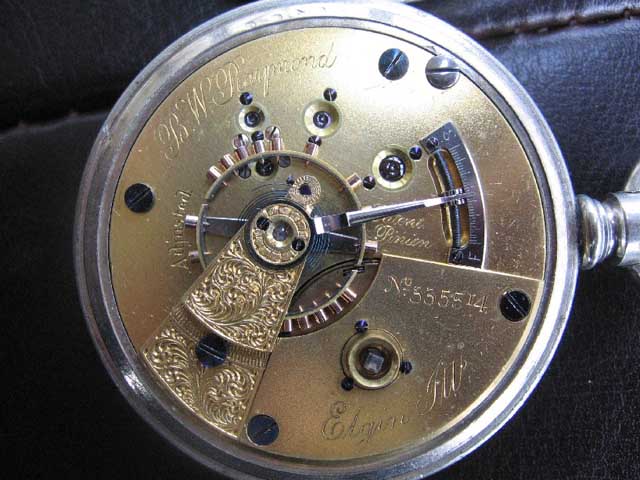 | ||||
|
Here is the dial. 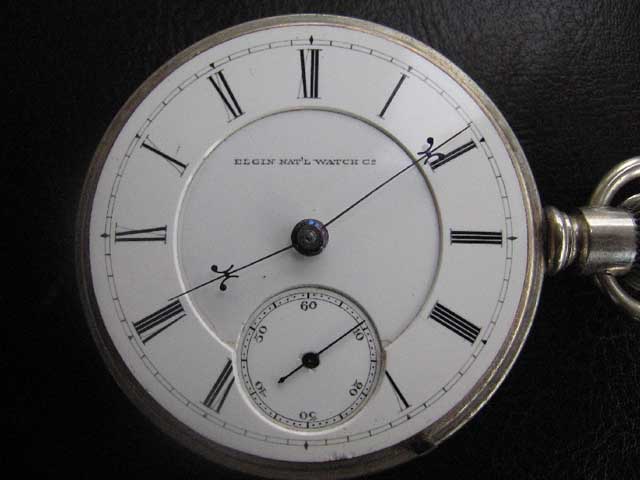 | ||||
|
| IHC Life Member Site Moderator |
Steve To me you can feel the difference in a watch with the stop works, as you said it just stops when winding & there is no coaxing it past that point, where one with out it you can always feel a little spring to the stem if you try to wind it a little more. Maybe not a good description but the best I could do. Tom | |||
|
These serial numbers make me wonder what the heck they were doing in the factory. I suppose we can only guess. | ||||
|
This one does seem to have a little bit of spring at the end, so it may have had the stop work removed. It seems to be in almost like-new condition, though. I'd bet it hasn't been worked on very much. When I bought it some years back I was told that it had belonged to the founder of the Lane Technological Institute, and the owner had scrapped the case for gold. | ||||
|
| IHC Life Member Site Moderator |
Steve I am not sure if every grade 70 had it, I just typed up what there parts book said. I do know that I just dug out 5 I have with the grade numbers they list & each one was designed to have it but I had that one that was missing the parts. I will have to do some more digging on the serial number stamping, I think I have one that looks just like yours & that one I posted was similar, just had the one small number. As I said I think you can tell when winding if it has it, with out it you are still trying to wind the mainspring once it is completely wound so it springs back slightly when you do that, but the stop works ones you are winding up against those metal stops & there is not spring back, no nothing it will not wind past the lock position. Tom | |||
|
I'm going to ask my watch maker to look at these. I'll get back to this next week. | ||||
|
Dave and everybody, I' m so used to see missing stopwork parts on watches that I don't pay attention to it any more. It seems that these components are discarded together with the broken mainspring during the repair. Since we are on the subject (I hope I'm not straying too far from it), just for general information,here is another example of the use of the stopwork. This is a music box mechanism and the stopwork makes sure that the sound stops before the slow speed, as the spring weakens at the end of the unwind, makes it unpleasant. Regards Peter 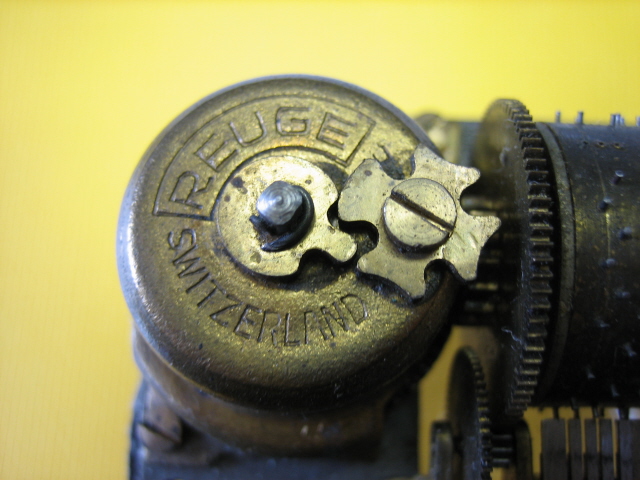 | ||||
|
| IHC Life Member Site Moderator |
Peter That is very interesting, I had never thought of other uses for those. Thanks for sharing that. Tom | |||
|
Well, my watch maker looked at my two B. W. Raymonds, and he tells me that both are missing part of the stop works. He sent pictures: 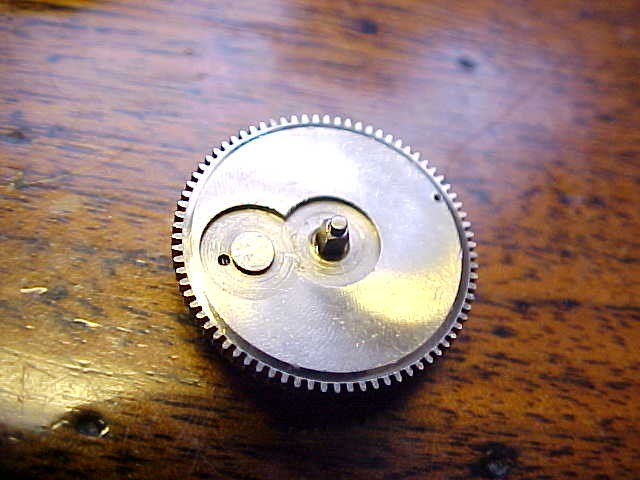 | ||||
|
Here is the other one. 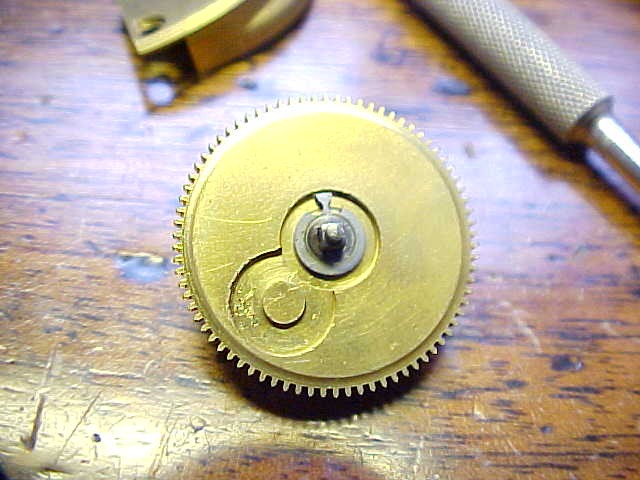 | ||||
|
BUT, he tells me not to worry because he has a whole box full of stopworks parts! 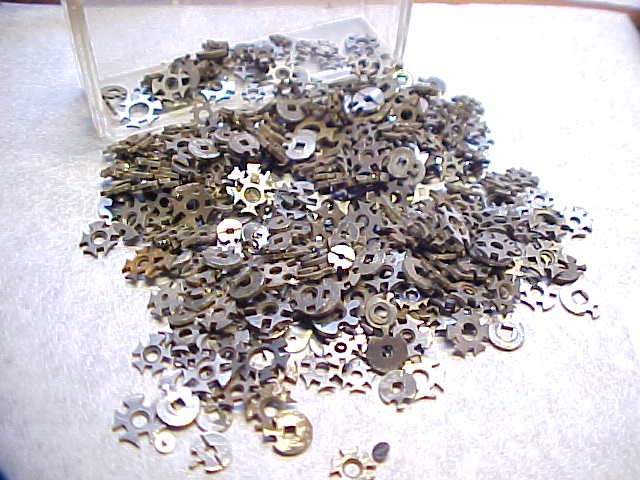 | ||||
|
Steve, You lucked out! At least your watchmaker has saved the parts | ||||
|
| IHC Life Member Site Moderator |
Steve That tub of stop works must be similar to where socks go to in the dryer, perhaps every missing part had travel through space & time into that tub. Tom | |||
|
| IHC Life Member |
Is it possible for your watch person to sort out and "sell" us sets of the Elgin Stopworks? | |||
|
Sure, I think he would be glad to work with you. His name is Philip Stoller pstollercw@yahoo.com | ||||
|
| IHC Life Member |
Thanks, I sent Phil and e-mail. I thnk I know this person, mebbe from eBay . . . | |||
|
Okay, guys. You made me look at my B.W.Raymond. First it came to a dead stop when winding, so I hope it has the stopworks. I'm going to take this one to the class and find out for sure. Second the serial #7279680 shows on the Elgin data base web site to be a grade 184, model 7 with a note that many runs were converted to grade 273. It looks like the model 7 in the watch guide, but Tom's list on the previous page shows grade 184 to be a model 5. The model 5 has a screw to the right of the balance cock and above the case screw which mine doesn't have. I am confused 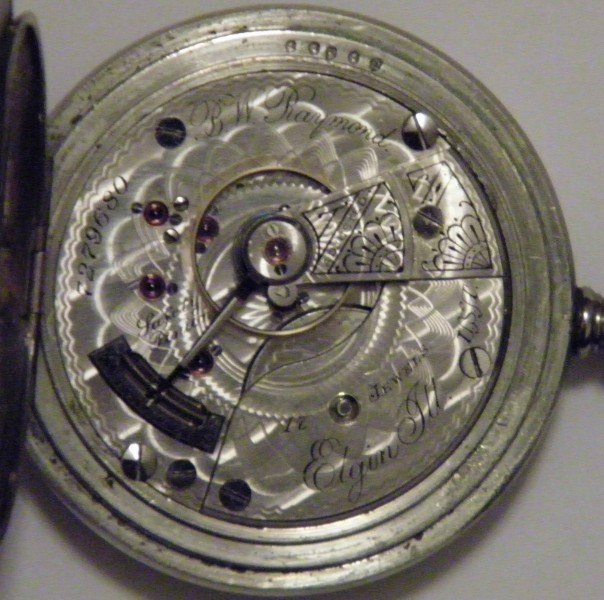 | ||||
|
Here's the dial. I never really paid attention to the hand style until today. This style is not shown in the guide. What is it called? 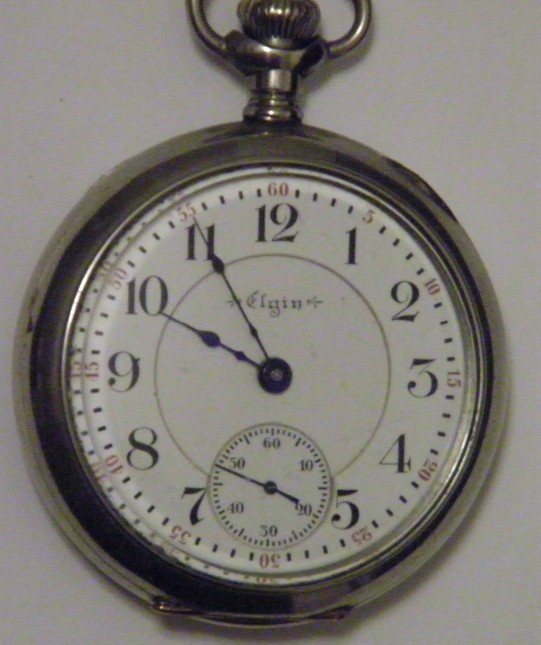 | ||||
|
| IHC Life Member Site Moderator |
Mary Ann In my book it shows the 184 to be a class 7 model 5 pendant set & the 273 to be a class 65 model 7, lever set. So I guess one way to tell is if yours is pendant set or lever set. I can not verify the accuracy of the info, it is out of an original Elgin hard bound book from 1904 | |||
|
| IHC Life Member Site Moderator |
Mary Ann Looking at the diagrams in the book, yours does have the look of the 7th model which was a lever set so perhaps yours was an upgrade. I will wait to hear back if yours is pendant or lever set. Also the regulator guide with the F & S on yours does match the model 7 also, it was different on the model 5 My book shows your hands as #394 for 17 size 1st & 18 size 2nd to 9th model Tom | |||
|
| IHC Life Member |
Mary Ann, your B W Raymond has correct hands and they are called 'Spade', Hour & Minute....Part #394....You have a nice B W Raymond, treat is with TLC....I know you will.... BTW....Good luck in school....I have no doubt you will be the star....YOU GO GIRL...! Regards, Jerry | |||
|
| IHC Life Member |
Mary Ann's watch is a pendant set....according to Wayne's database.... M A can tell us for sure.... Regards, Jerry | |||
|
| IHC Life Member Site Moderator |
That's why I was asking her Jerry, if it was upgraded to the grade 273 then it would have been changed over to lever set. My scanner is broke, so here are a few photos from the book Mary Ann, if it helps. Tom | |||
|
| IHC Life Member Site Moderator |
The 5th model | |||
|
| IHC Life Member Site Moderator |
7th Model | |||
|
Tom and Jerry - it is pendant set. So what do I have now? The serial shows it to have been made in 1897, the first year of the model 7. It also has screwed down jewel settings as the model 7 does. Could this have been a model 5 (pendant set) movement they may have had when the model 7 was introduced that they upgraded with some model 7 features? Thanks for the info on the hands and to Tom for the book diagrams. At least they are correct. I know it has been recased. And it keeps very good time. And I don't know about being the star of the class, but I will at least "go girl" ! | ||||
|
| IHC Life Member Site Moderator |
Mary Ann Perhaps someone with more knowledge of the upgrades they did can answer. Yours sure looks like the model 7 so maybe they did up grade them but leave them pendant set? I just don't know. I probably just made every body more confused with all this, I know I am. Tom | |||
|
Tom, I am more confuseded than you, trust me! | ||||
|
Question for Tom Brown Some time back on the first page of this topic, you posted a list of Elgins that were produced with the stopworks mechanism. Was this from your personal research, or did you have another source for that information? Thanks, Steve Gossard | ||||
|
| IHC Life Member Site Moderator |
Steve I pulled the information from a 1908 Elgin Parts book, looking at the stops works parts & then going by the list of movements they fit I came up with the list. If I didn't mention in the original post of the list, the list only covers movements up to the time Elgin printed the book, so if they made any movements later with the stop works I wouldn't have had them in the book. Hope that answers your question. Tom | |||
|
Thanks, Tom. That's great information. It makes the older Elgins even more interesting. Steve | ||||
|
| Powered by Social Strata | Page 1 2 |
| Your request is being processed... |
|
Welcome Aboard IHC185™  Internet Horology Club 185
Internet Horology Club 185  IHC185™ Discussion Site Main Page
IHC185™ Discussion Site Main Page  Horological Discussions, Questions and Answers
Horological Discussions, Questions and Answers  Pocket Watch Discussions
Pocket Watch Discussions  An elgin with an INTACT stopworks all put together!!
An elgin with an INTACT stopworks all put together!!
 Internet Horology Club 185
Internet Horology Club 185  IHC185™ Discussion Site Main Page
IHC185™ Discussion Site Main Page  Horological Discussions, Questions and Answers
Horological Discussions, Questions and Answers  Pocket Watch Discussions
Pocket Watch Discussions  An elgin with an INTACT stopworks all put together!!
An elgin with an INTACT stopworks all put together!!©2002-2025 Internet Horology Club 185™ - Lindell V. Riddle President - All Rights Reserved Worldwide

